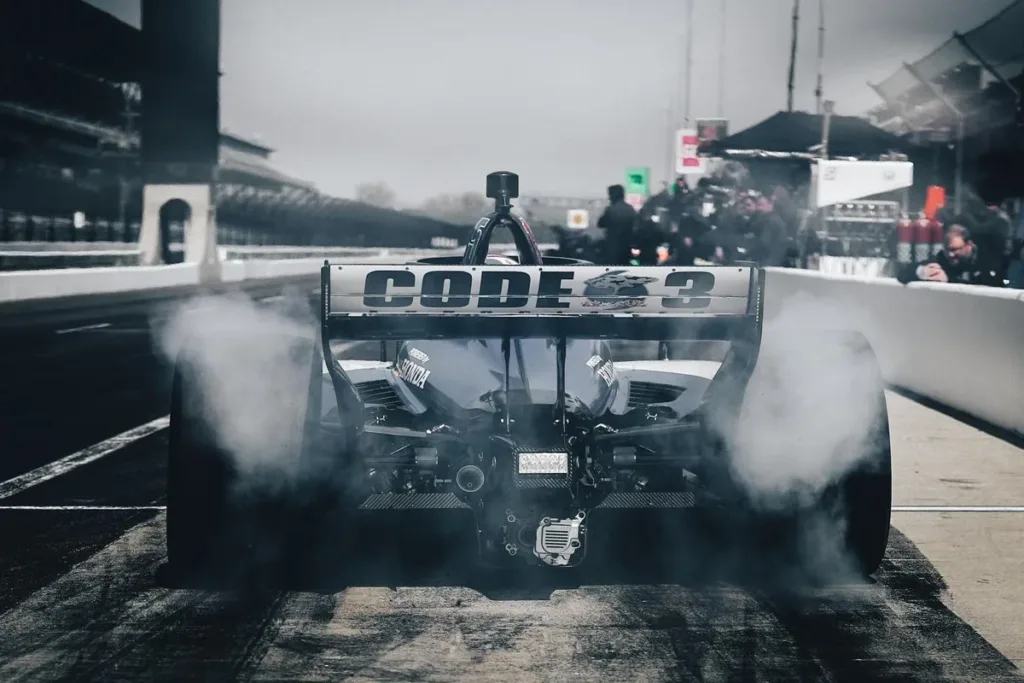IndyCar Hybrid Era Begins at Mid-Ohio with Chevrolet and Honda’s Collaborative Effort
This weekend, the IndyCar Series ushers in a new era at Mid-Ohio with the midseason release of its hybrid engine, a collaborative effort between Chevrolet and Honda. The current 2.2-liter, twin-turbocharged V6 internal combustion engine remains in place, but it is now paired with an electrical low voltage (48V) Motor Generator Unit (MGU) and a 320 Kilojoules-per-lap supercapacitor Energy Storage System (ESS) to make up this first-of-its-kind IndyCar hybrid unit.
The decision to use a supercapacitor over a battery was due to its ability to capture and deploy energy faster.
The IndyCar hybrid system, comprised of four major components, including the ESS, MGU, DC/DC converter, and Voltage Control Device, weighs 42.5 kilograms. The ESS, produced by Honda Racing Corporation USA (HRC), features 20 supercapacitors designed by Skeleton, which store the energy harvested by the MGU until deployed by the drivers.
The Key Components of the IndyCar Hybrid System
MGU: Produced by EMPEL in collaboration with Chevrolet and Ilmor, the MGU captures the energy produced under braking and turns it into electricity to be stored in the ESS. Operating at a maximum of 12,000rpm, the MGU is linked to the driveshaft of the engine, allowing the driver to deploy harvested energy for up to an additional 60 horsepower.
DC/DC Converter: Developed by Brightloop, the DC/DC converter ensures that the energy from the ESS or MGU is output at the proper voltage – 12V – for the current powertrain.
Engine Control Unit (ECU): The McLaren Applied-provided TAG-400i ECU links the components, with additional software set to be used to safeguard the correct synchronicity between the ERS and the Chevrolet and Honda engines.
Deployment and Regeneration of the Hybrid System
On the racetrack, the ERS captures energy generated under braking and uses it to charge the ESS’s supercapacitors, a process known as regeneration. A driver can manually control this power regeneration process, or it can be automatically moderated by technology.
The deployment of the energy stored in the ERS is activated manually by the driver via a button on the steering wheel. The amount of energy stored per lap will vary by track length and type.
The current maximum output of the hybrid is 60bhp, but there is the potential for the system to be upgraded to produce more, depending on the requirement from IndyCar and its two engine suppliers. Additionally, the ERS generates 45 Newton-meters of torque.
The hybrid unit also brings the benefit of allowing drivers to start or restart the car without assistance, limiting cars being stalled and bringing out full-course cautions, reducing the risk for safety workers responsible for attending to stalled cars.
The engine was initially paired and tested with hybrid power in August 2023 at Sebring International Raceway, and has since seen 30 drivers log 25,921 miles over the past 10 months.
The IndyCar Series continues to innovate and push the boundaries of racing technology, and this new hybrid era is set to bring even more excitement to the 2023 season.
🔗 Source
